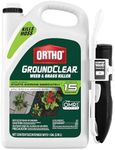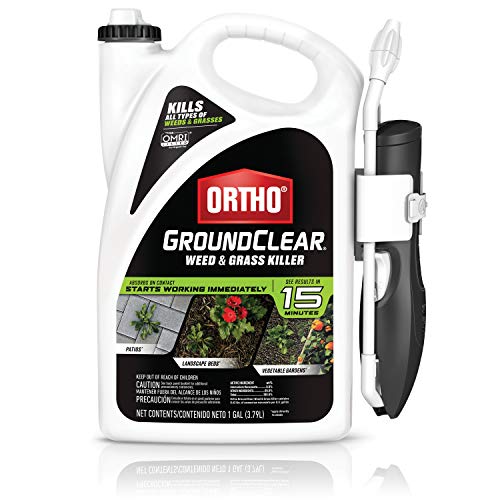Buying Guide for the Best Weed And Grass Killers
Choosing the right weed and grass killer can make a significant difference in maintaining a healthy and attractive garden or lawn. The key is to understand your specific needs and the characteristics of the products available. Here are some important specifications to consider when selecting a weed and grass killer, along with explanations to help you make an informed decision.Type of Weed KillerWeed killers can be classified into selective and non-selective types. Selective weed killers target specific types of weeds without harming the surrounding grass or plants, making them ideal for lawns and gardens. Non-selective weed killers, on the other hand, kill all vegetation they come into contact with, which is useful for clearing areas like driveways or walkways. Choose a selective weed killer if you want to preserve your lawn or garden plants, and a non-selective one for total vegetation control.
Active IngredientsThe active ingredients in weed killers determine their effectiveness and the types of weeds they can control. Common active ingredients include glyphosate, which is effective against a wide range of weeds, and 2,4-D, which targets broadleaf weeds. Understanding the active ingredients helps you choose a product that will effectively tackle the specific weeds in your area. Check the label for the active ingredients and match them to the weeds you need to control.
Application MethodWeed killers come in various application methods such as ready-to-use sprays, concentrates, and granules. Ready-to-use sprays are convenient for small areas and spot treatments, while concentrates need to be mixed with water and are suitable for larger areas. Granules are easy to apply and work well for broad coverage. Consider the size of the area you need to treat and your preference for convenience when choosing the application method.
Residual EffectSome weed killers have a residual effect, meaning they continue to prevent weed growth for a period after application. This can be beneficial for long-term weed control but may also affect the ability to plant new vegetation in the treated area. If you need ongoing weed prevention, look for products with a residual effect. If you plan to replant soon, choose a product without long-lasting effects.
Safety and Environmental ImpactConsider the safety of the weed killer for humans, pets, and the environment. Some products are labeled as safe for use around children and pets once dry, while others may require more caution. Additionally, environmentally friendly options are available that minimize harm to beneficial insects and the surrounding ecosystem. Read the safety instructions and environmental impact information to ensure the product aligns with your safety and environmental values.
RainfastnessRainfastness refers to the time it takes for the weed killer to become effective after application, even if it rains. Products with shorter rainfast times are more convenient in areas with unpredictable weather. If you live in a region with frequent rain, look for a weed killer that becomes rainfast quickly to ensure its effectiveness is not compromised by unexpected showers.





















